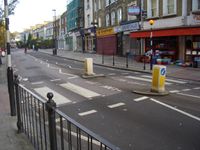FR:Tag:footway=crossing
| Description |
|---|
| Traversée de voie représentée par un way |
| Groupe: Sidewalks |
| Utilisé pour ces éléments |
| Combinaisons utiles |
|
| Voir aussi |
| Statut : Approuvé |
| Outils pour cet attribut |
|
Pour relier deux trottoirs définis par des ways séparés au niveau d'un passage piéton, créez un way perpendiculaire à la voie traversée avec les tags highway=footway et footway=crossing. Connectez ce way à la voie avec un node. Ces tags peuvent aussi être utilisés pour relier un chemin au way d'un voie à chaussées séparées.
Cette approche n'est pas adaptée si les trottoirs sont modélisés par le tag sidewalk=* sur la voie. Les deux approches sont décrites sur la page trottoirs.
Cette approche est également adaptée si les trottoirs sont représentés par des surfaces par les tags highway=pedestrian et area=yes, ou si les routes sont elles-mêmes définies par des surfaces avec la clef area:highway=*.
Comment cartographier
Le tableau ci-dessous explique comment cartographier les différents cas de figure. Il inclut également les tags à appliquer aux voies si celles-ci sont définies par des surfaces. Voir également la clef footway.
| Cas | Tags sur Way tags | Tags surfaciques | Diagrammes | Exemples | ||
|---|---|---|---|---|---|---|

Passage piétons |
highway=footway | area:highway=* (type de la voie traversée, par ex. area:highway=primary) | 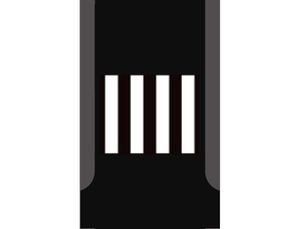
|
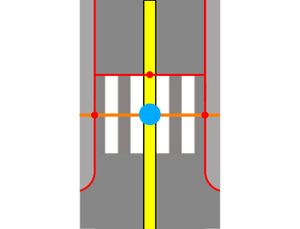
| ||
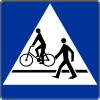
Passage piétons et vélos non-ségrégués |
highway=path
+ segregated=no |
area:highway=* (type de la voie traversée, par ex. area:highway=primary) | 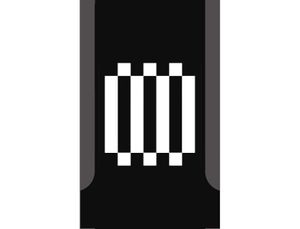
|
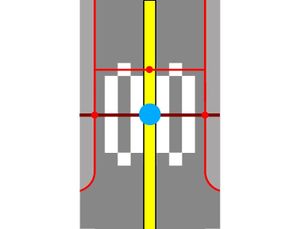
| ||

Passage piétons et vélos ségrégués |
Méthode 1 (un seul way): |
area:highway=* (type de la voie traversée, par ex. area:highway=primary)
area:highway=* (type de la voie traversée, par ex. area:highway=primary) |
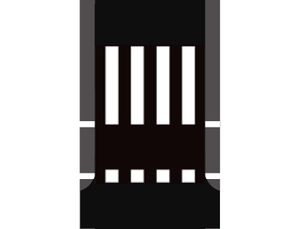
|
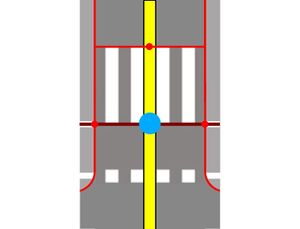
| ||
Méthode 2 (deux ways distincts):
|

|
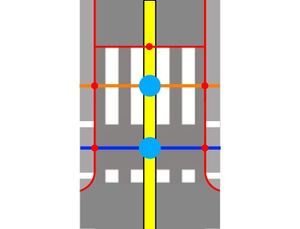
| ||||

Passage piétons et vélos ségrégués avec îlot central |
Méthode 1 (un seul way): |
area:highway=* (type de la voie traversée, par ex. area:highway=primary)
area:highway=* (type de la voie traversée, par ex. area:highway=primary)
|
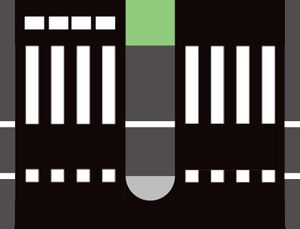
|
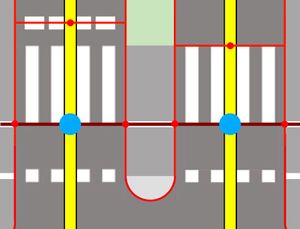
| ||
| highway=path | highway=path | highway=path | ||||
Méthode 2 (deux ways distincts):
|

|
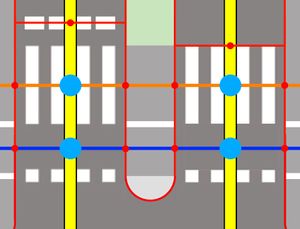
| ||||
| highway=footway | highway=footway | highway=footway | ||||
| ||||||
| highway=cycleway | highway=cycleway | highway=cycleway | ||||
Voir également
- footway=*
- footway=sidewalk
- footway=link
- sidewalk=*
- highway=crossing
 associatedStreet / street
associatedStreet / street- Proposed features/Sidewalk as separate way#Crossings - Proposition approuvée qui introduit ce tag
| ||||||||||||||||||||||||||||||
